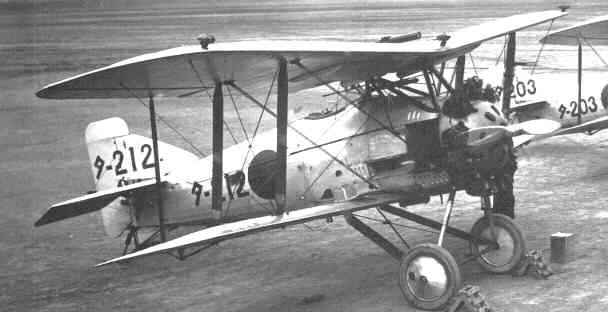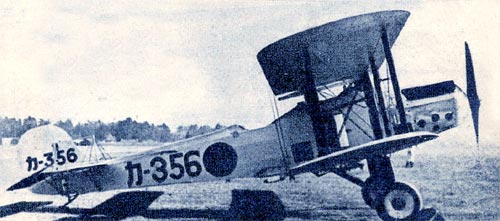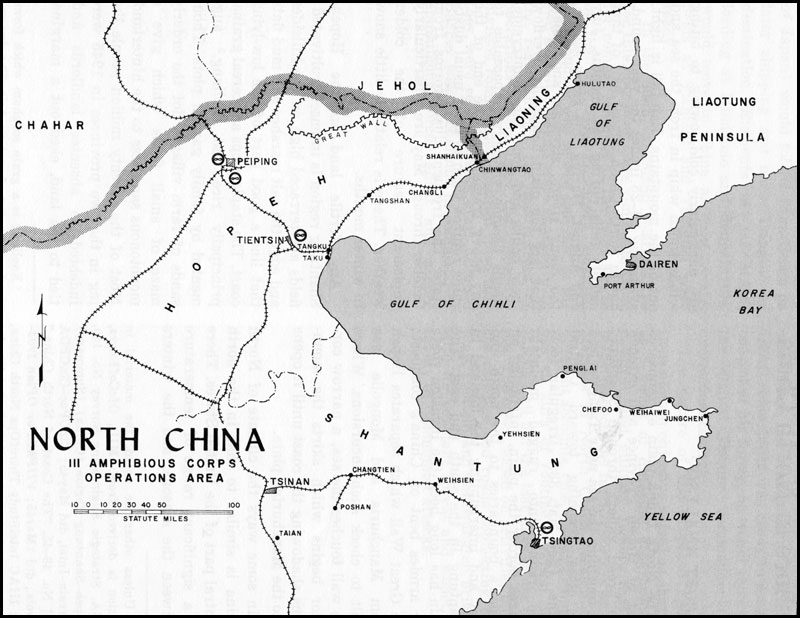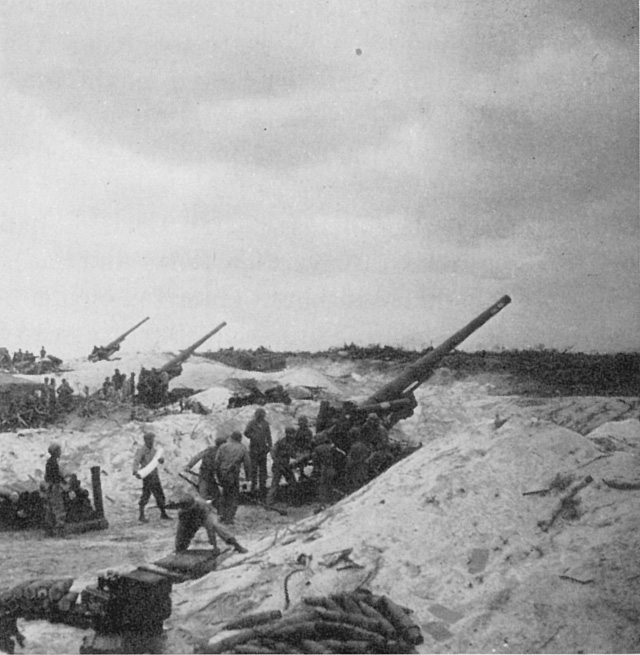This page contains kanji charcters.
 |
| Nation | Japan | UK | Russia | US | India | Portgul | Germany | France | etc |
| People | 18,796 | 8,449 | 7,366 | 3,149 | 1,842 | 1,599 | 1,430 | 1,406 | 4,769 |
| Ratio | 38.5 | 17.3 | 15.1 | 6.5 | 3.8 | 3.3 | 2.9 | 2.9 | 9.8 |
Japanese Marine, troops of 1,876 collied with Chinese private troops in Shanghai on 29 January 1932. Minister Shigemitsu requested IJA dispatch on 1 February. Japanese Cabinet held a meeting on 2 February. Makino and Takahashi disagreed and proposed withdraw of Japanese people. But the cabinet decided expedition. Japan had to dispatch troops in large scale. IJN dispatched aircraft carrier Kaga and Hosyo in action at first. Aerial combat was done. Under a commision of British minister, Murai minister told Mayor of Shangnai that Ueda demanded 20 km withdrawal of Chinese troops on 18 February. See the map. The Chinese troops had already made 3 layer-zones of defence. Each zone were a few lines of a trench. They were WWI type positions. Japanese army began attack with artillery and tanks on 20 February. Japanese army stopped the first offense on 22 February, though IJN supplied with 1.2 million ammo of rifles, 260 thousand ammo of machine guns and 4 thousand ammo of guns. The second offence began on 25 February, and could not break the first front.
 |
 |
| 3shiki-2go Kansen | 13shiki-2go Kanko B1M2 |
Gunzo, p36-49 No.90
Shanghai Incident (1932)
| District | Number |
| Philippines | 138 |
| Java, Bali | 99 |
| Borneo | 42 |
| Malay | 26 |
| Timor | 24 |
| Sumatra | 23 |
| New Britain | 12 |
| Guam | 12 |
Jan30 Aircraft carrier Kaga and Sawakaze arrived at Maanshan Islands
Jan31 Enemy repeated attacks
----- 17 aircraft of Kaga flew over Shanghai
Feb01 Aircraft carrier Hosyo and 2nd Destroyer Squadron arrived at Maanshan Islands
Feb22 An enemy Boeing-218 shot down a Mitsubishi 13shiki-3go kanko. 3 Nakajima 3shiki-2go kansen shot down it at Suzhou
Although Japan got a military win, Japan failed in diplomatic relation with League of Nations. Japan lost European nations support except for Uk.
Amphibious operation
Japan had actioned amphibious operations in the Pacific for three months. IJA and IJN used 376 merchant ships of 1.9MGT in the big campaings. Japan lost 53 merchant ships which were 14% of all the Japanese merchant ships.
Ohuchi, p20-21
 |
Qinhuangdao (Shinkoutou)
US thought that one inherits legitimation of China who controls Central Plain as well as Japan did. But it was not true under nationalism in China.
-
1944Oct03 the Joint Chiefs of Staff ordered Nimitz to occupy an island in Ryukyu Islands untill 1st March 1945
1944Oct05 Nimitz informed cancel of Taiwan invasion to all the armies in the Pacific
Okinawa kessen
Ulithi Atoll
The Ulithi Atoll(9.97N, 139.67E) locates at distances of 644km, 1,400km, 1,500km and 1900km from Palau Harbor, Iwojima, Manila and Okinawa. USN was to occupy the Ulithi Atoll to conquer Japan. US Army landed on 22 September 1944. Palau and Ulithi could defense air raids one another, because P-38 had a range radius of 870km. 617 US ships had ported in the Ulithi Atoll during the Okinawa Battle at once, though Apra Harbor of Guam could port a few hundred ships.
Gunzo, p95-96 No.77
Gakken, Vol.28
Logistic ships
US logistic task force supported fast carriter TG with 33 oilers, 11 escort carriers, 10 tag boats etc. Nimitz manuverd 1,213 ships inclding 649 freighters.
Kaijyo logistics
Preparation before landing
| Time | Aircraft [approx] | Targets |
| 06:40-08:20 | 240 | airfields |
| 09:20-10:15 | 220 | airfields vessels |
| 11:45-12:30 | 140 | Habor facility; Naha Nago Yonahara Awase ±¿Å·¹Á Åϵ×ÃÏ |
| 12:40-13:40 | 130 | Naha |
| 14:45-15:45 | 170 | Naha |
| Kanji | Name | GT | KIA |
| ÊõÍè´Ý | Houraimaru | 3,201 | 17 |
| Ê¡±º´Ý | Fukuuramaru | 3,177 | 1 |
| ÂÀ³¤´Ý | Taikaimaru | 2,478 | 26 |
| ÆîÍÛ´Ý | Nanyoumaru | 2,218 | 54 |
| ¹¾Î¶´Ý | Kouryumaru | 2,170 | 37 |
| Å´»³´Ý | Tetsusanmaru | 2,018 | - |
| Â裱Æ´Ý | 1st Nankamimaru | 1,163t | - |
| ¿·±º´Ý | Niuramaru | 294 | 1 |
| Â裶Çî¿´Ý | 6th Hakatamaru | 262 | - |
| Â裲´Ý¿À´Ý | 2nd Marushinmaru | 196 | - |
| Â裵ÂçÀ®´Ý | 5th Taiseimaru | 95 | - |
Air raid for destroying enemy air force
 |
| Kanji | Name | Area |
| °¤²Å | Aka | 3.1km2 |
| ·Äα´Ö | Kerama | 1.7km2 |
| ÅϲÅÉß | Tokashiki | 15.3km2 |
Finally Japan estimated that enemy would land on Okinawa in Mar the first of 1945. The IJN 5th Air fleet (580 aircraft) in Kyushu fought with Task Group 58(TG-58), lost 128 aircraft on 18 and 19 March. The TG-58 refueld, got food and exchanged aviators and aircraft at the sea of the south of Okinawa on 22 March. The TG-58 and escort aircaft carriers did 3,095 sorties. On 26 March US Army began landing Kerama Islands to get seaplanes base and anchorage area for invading fleet. The map shows the Kerama Islands which was splitted into two straits called Kerama Strait and Aka Strait. The depth of the straits is 13 hiro to 37 hiro (hiro = 1.8m). The coasts are 44 natural ports. 77th Division landed on the Kerama Islands 15 times.
DOA, p60-62
Start up landing clock
The US 6th Marine Division (24,356 troops) and 1st Marine Division (26,274 troops) departed from Guadalcanal on 12 March 1945. They left Saipan for Okinawa on March 25th. A convoy would depart from US west coat, when landed before 40 days for supplies. Each convoy would be to depart in 10 days for 21 times. The convoys of 430 ships had transported troops of 183,000 and supplies of 748,000 ton from Leyte, etc at first. They are a few of them, as follows and are cited on Wiki.
-
USS Pecos (AO-65) spent April and May at sea in the fueling area off Okinawa transferring oil and gasoline to 3rd Fleet ships.
USS Ashland (LSD-1) touched at Samar on 1 July to embark PT boats and their crews for transportation to Kerama Retto. The ship sailed on 3 July, unloaded her charges, and returned to Leyte on 10 July. She shuttled a similar cargo to Okinawa soon.
USS Epping Forest (LSD-4) arrived off the Hagushi beaches 1 April 1945 for the invasion of Okinawa, and during the days of bitter fighting, repaired landing craft at various anchorages around the island. She worked with the skill of long practice under air attacks and the constant threat of enemy suicide attacks by small boats and swimmers as well as aircraft.
USS Gunston Hall (LSD-5) remained anchored at nearby Kerama Retto until 1 July to repair small craft. She was untouched by the enemy's fierce kamikaze attacks although she saw several other American ships hit and crippled.
USS Lindenwald (LSD-6) sailed due north from San Pedro Bay, Leyte, for Okinawa on 26 March and arrived 1 April. She remained off Okinawa for 92 days, docking, repairing, and servicing landing craft damaged by enemy gunfire or the heavy surf. During this period, the ship repaired 452 boats. Enemy harassment twice threatened to cut short her busy career. Early morning 27 May, after suicide planes crashed two sister auxiliary ships, Lindenwald splashed an enemy aircraft before it could crash nearby Carina. Two weeks later, a murderous barrage from Lindenwald diverted an incoming suicide plane just enough to escape disaster. It barely missed the radar mast and splashed 500 yards off the bow.
USS Oak Hill (LSD-7) rehearsed with units of the 1st Marine Division for her next operation, the Okinawa campaign. On 1 April, she arrived in transport area Baker, lowered her LCMs for the assault on Blue Beach and then began repairing landing craft. Through the end of May, she remained in the Hagushi area for repair duties. Then she transported Marines and tanks to Iheya Shima and to Aguni Shima before steaming back to Leyte, 10 June. For the remainder of the war, Oak Hill transported men and equipment from the central Pacific to the Philippines and Okinawa.
USS White Marsh (LSD-8) and her division mates arrived off Okinawa during the night of 31 March - 1 April. Early in the morning, she disembarked her troops for the landings on Okinawa. Once again, after completing the disembarkation process, the dock landing ship anchored and began landing craft repair duty. Throughout her two-month stay at Okinawa, enemy air activity was heavy, but White Marsh only engaged Japanese aircraft on three occasions - on 6, 12, and 15 April - and claimed hits on two of the attackers. On 3 June, the ship departed Okinawa and proceeded to Leyte. She entered San Pedro Bay on 8 June and remained there for three days. On the 11th, the ship moved to Manicani Island where she loaded six motor torpedo boats and their crews for transportation to Okinawa. She left Manicani on 15 June and arrived in Kerama Retto on the 19th. She discharged cargo and personnel during the next two days and began a voyage to the Philippines on the 22d.
USS Casa Grande (LSD-13) next cruised among the Solomons to load Marines, landing craft, and tanks for the invasion of Okinawa. She took departure from Ulithi on 26 March, and arrived off Okinawa at dawn of 1 April. Landing equipment and troops under the first of the kamikaze attacks which were to bathe the Okinawa operation in blood, she moved to Kerama Retto on 4 April to operate a small boat repair shop there until 3 June, when she sailed for a minor overhaul at Leyte.
USS Cabildo (LSD-16) carried out her duties of docking and repairing small craft, transporting amphibious craft, and operating boat-pools at Guam and Okinawa in July.
-
0530 10 battleships, 9 cruisers, 23 destroyers and 177 gunboats opend fire
0550 dawn
0745 aircarft released napam bombs on beach and trenches
0800 a first group of Amphibious tanks and trucks ran offshore 360m
0815 first formation near their mother ships
0820 the first line ran
0830 the line ashored
Tokuda, p180
LCVP
Daihatsu
Gun bombardment
 |
 |
| USS Colorado in Okinawa | 155mm at Keise I. |
| Caliber | Stowage | Mass[2] | Qty | Fire power | Barrel life [rounds] |
| 152mm | 200 | HC 47.6kg | 27 | 1.29t | 750 - 1,050 |
| 203mm | 150 | HC 118kg | 74 | 8.73t | 715 |
| 305mmL50 | 100 | HC 336kg | 12 | 4.03t | 200 |
| 356mmL45 | 100 | Bombardment 640kg | 20 | 12.8t | 175 - 200 |
| 356mmL50 | 100 | HC 578kg | 36 | 20.8t | 200 - 250 |
| 406mmL45 | 100 | HC 862kg | 24 | 20.69t | 395 |
Battleship Colorado destroyed 2 anti tank artillery postions on 14 May. USN began bombardment on 25 March. USS Nevada and West Virginia were salveged at Pearl Harbor and came back gun fire operations. USS Arkansas (BB-33) was the oldest battleship of 33-year-old among the battery group. USS Tennessee (BB-43) was eqwipped with 56 40mm Bofors guns for AA combat. They spent shells of 13,000 (15-40cm) during 7 days. It weighed 5,162t by 10 battle ships and 10 cruisers, including 12cm shells. IJA knew gun power of warships. The total number of main guns of battleships and cruisers was 194. Mass of each gun was known. All the guns of fire power was 68.3t at a time. Torikai shows rounds number, so I check up the total mass[1]. However, the numbers is not matching.
I calculated average rounds and used ratio of each guns. 36 cm and 15 cm guns showed high ratio. I do not know why 40 cm and 20 cm guns fired fewer. USN might plan that other warships would fire, when the light cruisers and the 36 cm battleships would retreat for ammunition.
| Name | Commissioned | Armament [mm] | AA 40mmL56, 20mmL70 | Complement |
| Arkansas, BB-33 | 1912 | 12x305L50 | 36x40mm, 36x20mm | 1,063 |
| New York, BB-34 | 1914 | 10x356L45 | 40x40mm, 48x20mm | 1,042 |
| Texas, BB-35 | 1914 | 10x356L45 | 40x40mm, 48x20mm | 954 |
| Nevada, BB-36 | 1916 | 10x356L45 | 40x40mm , 45x20mm | 864 |
| New Mexico, BB-40 | 1918 | 12x356L50 | 40x40mm, 40x20mm | 1,084 |
| Idaho, BB-42 | 1919 | 12x356L50 | 40x40mm, 40x20mm | 1,081 |
| Tennessee, BB-43 | 1920 | 12x356L50 | 56x40mm, 43x20mm | 1,401 |
| Colorado, BB-45 | 1923 | 8x406L45 | 36x40mm, 43x20mm | 1,080 |
| Maryland, BB-46 | 1921 | 8x406L45 | 36x40mm, 43x20mm | 1,080 |
| West Virginia, BB-48 | 1923 | 8x406L45 | 36x40mm, 43x20mm | 1,407 |
| Pensacola, CA-24 | 1930 | 10¡ß203 | - | 653 |
| Salt Lake City, CA-25 | 1929 | 10¡ß203 | - | 612 |
| Portland, CA-33 | 1933 | 9¡ß203 | - | 848 |
| Indianapolis, CA-35 | 1932 | 9x203 | - | 1,269 |
| Minneapolis, CA-36 | 1934 | 9¡ß203 | - | 708 |
| Tuscaloosa, CA-37 | 1934 | 9¡ß203 | - | 708 |
| San Francisco, CA-38 | 1934 | 9¡ß203 | - | 708 |
| Wichita, CA-45 | 1939 | 9¡ß203 | - | 929 |
| St. Louis, CL-49 | 1939 | 15¡ß152L47 | - | 888 |
| Birmingham, CL-62 | 1943 | 12¡ß152L47 | - | 1,200 |
| Caliber | Total rounds | Average rounds Used ratio | Mass[kg] | Sub[t] |
| 40cm | 1,543 | 64 (64%) | 862 | 1330.066 |
| 36cm | 3,247 | 90 (90%) | 578 | 1876.766 |
| 30cm | 575 | 48 (48%) | 336 | 193.200 |
| 20cm | 3,700 | 50 (33%) | 118 | 436.600 |
| 15cm | 4,200 | 156 (78%) | 47.6 | 199.920 |
| 12.7cm | 27,750 | - | 24.6 | 682.650 |
| Total | - | - | - | 4719.202 |
TG58 air raid airfields of Kyushu
TG58 had 17 carriers which carried 1,212 aircraft. Escort warships of the carriers were 8 battleships, 18 cruisers and 64 destroyers. Escort also had 76 seaplanes. Carriers of TG58 had 581 fighters including 53 night fighters. Fast Carrier Group left for Leyte on Jun 13.
| F4U-1D | FG-1D | F6F-5 | F6F-5E | F6F-5P | F6F-5N | FG-1 | F6F-3 | FM-2 | |
|---|---|---|---|---|---|---|---|---|---|
| TG58-1 | 71 | - | 166 | 4 | 12 | 10 | - | - | - |
| TG58-2 | 30 | 2 | 49 | 13 | 6 | 27 | - | - | - |
| TG58-3 | 99 | - | 140 | 4 | 11 | 12 | - | - | - |
| TG58-4 | 65 | - | 118 | - | 4 | 4 | 1 | 3 | - |
| TG50-8 | - | - | - | - | - | - | - | - | 32 |
| Total | 265 | 2 | 473 | 21 | 33 | 53 | 1 | 3 | 32 |
CAP and ASW of TG52
TG52(SUPPORT CARRIER GROUP¡Ëhad 18 escort aircraft carriers, 34 destroyers escorts. The total aircraft were 540. The 18 escort carriers had 343 fighters and 197 torpedo bombers inculding 6 with a radar. The fighters did CAP which were 64% of the total aircraft of TG52. The 343 fighters consisted of 262 FM-2 and 77 F6F. George or Frank could not combat over Okinawa in short of range. Did FM-2 combat against Zero? FM-2 had bigger power than F4F. Tbl-100 shows designation and quantity of the aircraft of TG52. Three escort aircraft carriers of 18 were damaged by Japanese aircraft and retired the mission, which were USS Sangamon (CVE-26) with 33rd squadron, Natoma Bay (CVE-62), Wake Island (CVE-65). The 33rd squadron had 6 TBM-3E which were equipped with a radar.
Another data shows that 20 CVEs took part in the Okinawa Battle and they carried 302 FM-2. After the battle, USS Lunga point (CVE-94) patrolled on 1 August in the west of Okinawa. 4 FM-2 intercepted at 1710. One of FM-2 shot down a Frances. This was the last kill of FM-2 in the Pacific War.
F4F, p53
3 submarines of IJN tried to attack a ferry route in the east of Okinawa. 4 submarines were equipped Kaitens and planned to attack ships at anchor. USN did ASW perfect.
Aircaft of CVEs did direct air support from 28 to 31 March 1945. They attacked batteries in th south, 10 biriges near the Nagasugusu Bay and released 15 napalm bombs at installation near the Hijya Creek. They kept on attacks at airfields and IJN bases.
DOA, p77
Marines and Army fighters
| Departure | Destination | Mile | mph |
| Hawaii | Johnston | 825 | 183 |
| Johnston | Majuro | 1,400 | 200 |
| Majuro | Eniwetok | 800 | 229 |
| Eniwetok | Saipan | 1,150 | 230 |
Dai 5 kantai no zenyou
USAAF fighters flew to Yomitan airfields on 7 April, and Kadena on 9 May. The 318th FG (P-47) might act in Iejima on 10 May. The 507th FG (P-47) moved to Iejima on 28 June. 35th FG moved to Okinawa in June. 49th FG moved to Okinawa in August. P-47N of the 318th FG ferried to Saipan from Hawaii as follows. The P-47 might fly 2,306km (1,432mi) from Saipan (15.2N, 145.7E) to Iejima (26.7N, 127.2E) probably. A B-25 guided them. While A ferry of 1300km (813mi) between Truk¡Ê7.47N, 151.83E) and Rabaul¡Ê4.22N, 151.83E) was dangerous for IJA 3 shiki-sen (Tony) in 1943.
World War II on Iejima
US Army Air Forces in Okinawa
Japan lose air control over Yaku Island
IJA fighter Frank could not escort beyond Yoron Island because of the short range. So most of IJA suicide aircraft were escorted by IJN. In the beginning of Okinawa battle, US fighters advanced Amami Islands. Sooner or later they advacened Yaku Island. USN and IJN flew fighters at night in Okinawa. It does not seem that USAAF and IJA did not action night fighter operations both. Enemy fighters from Iejima flew constant over Yakushima in May 1945.
Iwamoto, p389
Japanese and US loss after Okinawa Battle
US Army and Marines lost 763 aircraft in the Okinawa Battle. 458 of 763 were lost in air combats. 305 of 763 were lost in operations. 536 USN crews were lost in KIA or MIA. While IJA and IJN flew 9,837 sorties and lost 2,803 aircraft in air.
DOA Okinawa, p519
Iwamoto, p359
Watanabe, p368
Hashimoto, p289
Gunzo, p47 No65
[1] Torikai
[2] USN shell mass of guns
[3] The United States Marines in North China
[4] Wedmeyer p.238-240
© 2007-2011 Enoki Sensor All Rights Reserved